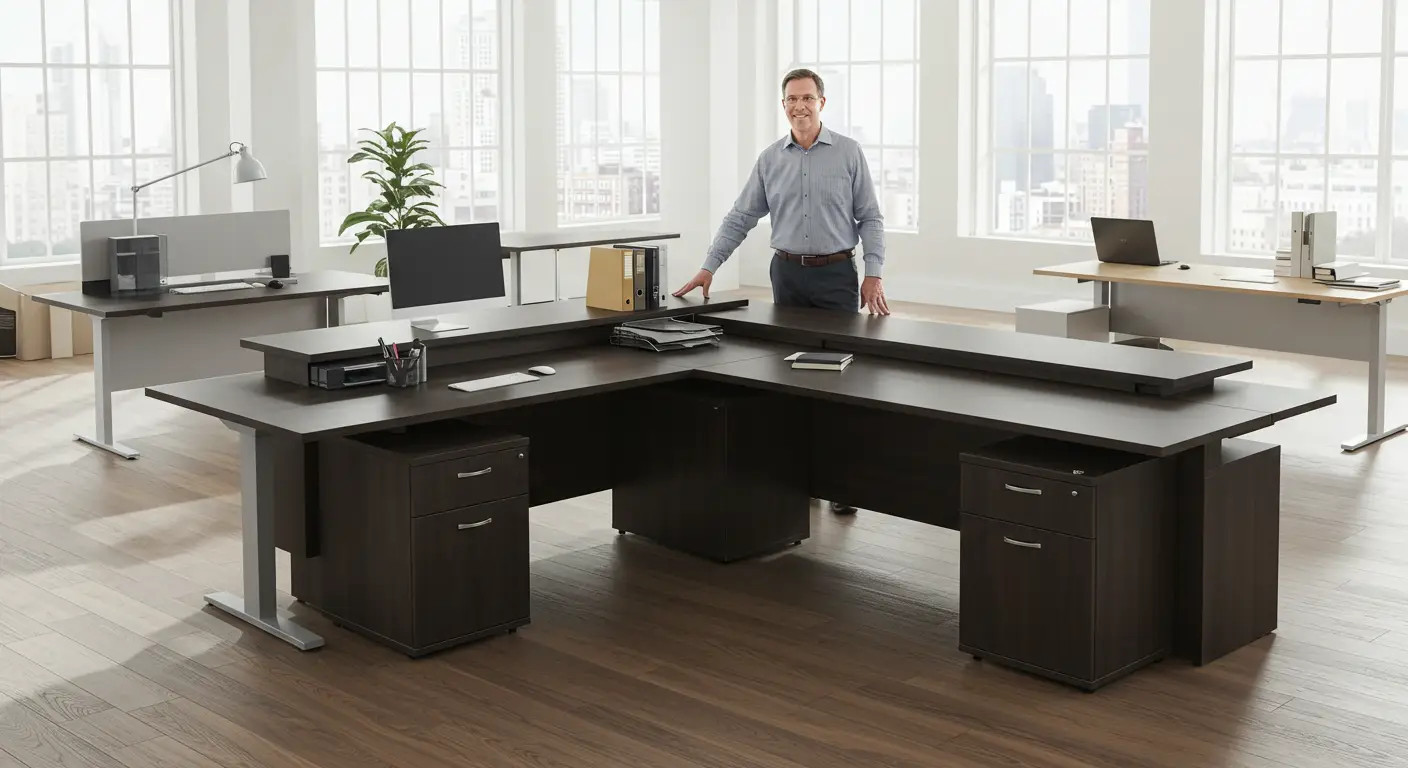How to Choose the Best Office Desk for Your Workspace
Selecting the perfect office desk is one of the most important decisions you’ll make when setting up your workspace. Whether you’re working from home, managing a corporate office, or starting a new business, the right desk can dramatically impact your productivity, comfort, and overall work satisfaction. With countless options available in today’s market, making the right choice requires careful consideration of several key factors.

Understanding Your Space Requirements
Before diving into desk styles and features, you need to thoroughly assess your available space. Measure your room dimensions carefully, noting the length, width, and height restrictions. Consider the placement of windows, doors, electrical outlets, and existing furniture that might influence your desk positioning.
Think about traffic flow around your workspace. You’ll need adequate room to pull out your chair, access filing cabinets, and move comfortably around the area. A cramped workspace not only feels uncomfortable but can also negatively impact your productivity and mental wellbeing.
Don’t forget to account for future needs. If you’re planning to expand your equipment, add monitors, or incorporate additional storage solutions, choose a desk that can accommodate these changes without requiring a complete workspace overhaul.
Size and Dimensions: Finding the Perfect Fit
Desk size directly correlates with functionality and comfort. Standard desk heights typically range from 28 to 30 inches, but this can vary significantly based on your height and seating preferences. If you’re particularly tall or short, consider adjustable-height options or a standing office desk to ensure optimal ergonomics.
Width and depth are equally crucial considerations. A narrow desk might work for basic laptop use, but if you’re using multiple monitors, require space for paperwork, or need room for creative projects, opt for something more substantial. Generally, a desk should be at least 48 inches wide and 24 inches deep for comfortable computer work.
L-shaped and U-shaped desks offer maximum surface area and are excellent for users who need multiple work zones. These configurations work particularly well in corner spaces and can efficiently utilise areas that might otherwise remain unused.
Material Choices and Durability
The material of your desk affects both aesthetics and longevity. Solid wood desks offer timeless appeal and exceptional durability but come with higher price points and maintenance requirements. Oak, maple, and walnut are popular choices that can withstand years of heavy use whilst developing attractive patinas over time.
Engineered wood products like MDF and particle board provide budget-friendly alternatives whilst still offering decent durability. Look for desks with laminate or veneer finishes that resist scratches, stains, and moisture damage.
Metal desks, particularly those made from steel, offer industrial styling and exceptional strength. They’re ideal for heavy-duty use and often feature powder-coated finishes that resist corrosion and wear.
Glass desks create an elegant, modern appearance and can make small spaces feel larger. However, they require frequent cleaning and may not be suitable for heavy equipment or rough use.
Storage Solutions and Organisation
Consider your storage needs carefully when selecting an office desk. Built-in drawers, filing systems, and shelving can help maintain an organised workspace whilst keeping essential items within easy reach.
Pedestals with lockable drawers provide secure storage for important documents and personal items. Some desks feature cable management systems, keyboard trays, and CPU holders that help maintain a clean, professional appearance.
If your chosen desk lacks adequate storage, ensure you have space nearby for additional filing cabinets, bookcases, or storage units that complement your desk’s style and functionality.
Ergonomic Considerations for Health and Comfort
Proper ergonomics prevent repetitive strain injuries and promote long-term comfort during extended work sessions. Your desk height should allow your elbows to rest at roughly 90-degree angles when typing, with your feet flat on the floor.
Monitor positioning is crucial for neck and eye health. The top of your screen should be at or slightly below eye level, positioned about arm’s length away. If your desk doesn’t accommodate proper monitor height, consider monitor arms or stands.
Adequate legroom prevents circulation problems and allows comfortable position changes throughout the day. Avoid desks with excessive cross-bracing or bulky pedestals that restrict leg movement.
Style and Aesthetic Integration
Your desk should complement your existing décor whilst reflecting your personal style preferences. Traditional wooden desks suit classic and transitional interiors, whilst sleek metal and glass combinations work well in contemporary settings.
Consider the visual weight of your desk within the room. Dark, heavy pieces can overwhelm small spaces, whilst lighter colours and materials help maintain an open, airy feeling.
Pay attention to hardware details like handles, legs, and trim pieces. These elements should coordinate with other furniture pieces and room fixtures for a cohesive appearance.
Budget Planning and Value Assessment
Office desks range from under £100 for basic models to several thousand pounds for high-end executive pieces. Establish a realistic budget that balances your needs with available funds, remembering that a quality desk is an investment in your daily comfort and productivity.
Consider the cost per year of use when evaluating options. A £500 desk that lasts ten years offers better value than a £200 desk requiring replacement after two years.
Factor in additional costs such as delivery, assembly, and accessories like desk lamps, organisers, or ergonomic additions when calculating your total investment.
Explore what happened to the website lately.
Conclusion
Choosing the best office desk requires balancing multiple factors including space constraints, functionality needs, aesthetic preferences, and budget considerations. Take time to evaluate your specific requirements, measure your space accurately, and research different options thoroughly. Remember that the right desk will serve as the foundation of your productivity for years to come, making careful selection a worthwhile investment in your professional success and daily comfort.






